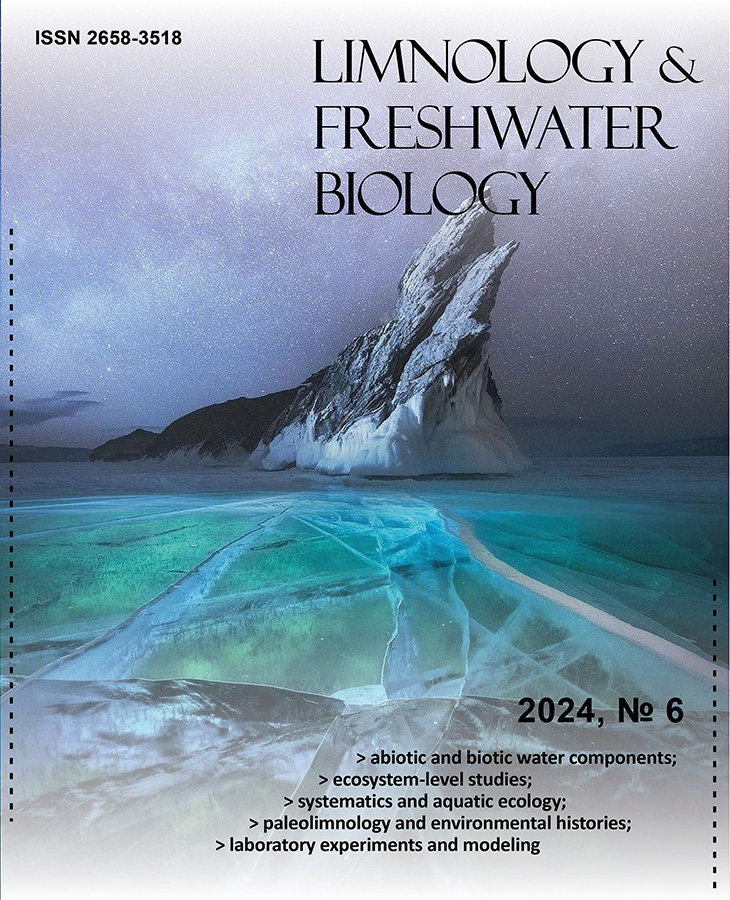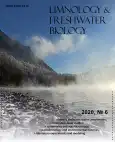No 6 (2020)
Articles
Development and deployment of autonomous water level monitoring system in the lower and upper sections of the Slyudyanka River
Abstract
The article presents the autonomous hydrometeorological station for organizing networks of monitoring the hydrological conditions in water bodies and collecting the related information, such as meteorological, hydrophysical, etc. The station showed high autonomy and accuracy in measuring water level in a water body. It also has an integrated GSM module for remote data transmission. It was successfully tested during a trial installation on the Slyudyanka River (Lake Baikal basin) in the autumn of 2020, which allowed us to characterize the behaviour of the main hydrological parameters of the watercourse.
 1080-1083
1080-1083


Study of microsatellite cross-species specificity in freshwater sponge families Lubomirskiidae and Spongillidae
Abstract
The endemic Baikal sponges of the Lubomirskiidae family are a unique bouquet of closely related species formed from a common ancestor with the present-day cosmopolitans, Ephydatia muelleri, facing today are big ecological problems that require careful study. It is necessary to analyze the genetic structure of endemic freshwater sponge populations for a better understanding of the influence of such adaptive features on permanent habitat conditions as the loss of the ability to form gemmules. Microsatellite markers are best suited for analyzing population structure. The closest species to them, for which microsatellite markers have been developed to date, is Ephydatia fluviatilis. In this article, we check the suitability of these markers for population genetic analysis of Lubomirskia baikalensis and E.muelleri species using bioinformatic and molecular genetic methods of analysis, since the cross-species specificity of microsatellite markers has been shown for many closely related species. Despite the revealed 45.5% cross-species specificity for both L.baikalensis and E.muelleri at the level of genomic data, qualitative population genetic analysis requires the development of specific microsatellite markers de novo based on the genomic data of L.baikalensis and E.muelleri.
 1084-1089
1084-1089


New taxonomic records of Zygnemataceae (Charophyta) from the Lake Baikal region
Abstract
Spirogyra, Mougeotia, and Zygnema, the most species-rich genera of green filamentous algae family Zygnemataceae, are globally distributed. However, in many regions of the world, including the Lake Baikal region, they remain poorly studied taxonomically. The traditional species identification of zygnemataleans is based on the morphology of asexual and sexual stages of their life cycle. During the study conducted in 2020, we identified 18 taxa of Spirogyra, Mougeotia, and Zygnema from 24 new locations, including Lake Baikal, the Angara River, the Irkut River, and small rivers and water bodies in the lake’s surrounding area. Fertile stages were observed only in five Spirogyra species, including one variety. S. circumlineata is first reported for Lake Baikal. Eight morphotypes of Spirogyra, three of Zygnema, and two of Mougeotia are likely new species for the region. Spirogyra is more widespread than Zygnema and Mougeotia in the region. The taxa of all three genera are dynamic components of periphyton, metaphyton, and aquatic macrophyte communities in the studied area and regularly occur together. Their ability to develop both attached and unattached communities facilitates their distribution, particularly in Lake Baikal’s coastal zone.
 1090-1100
1090-1100











